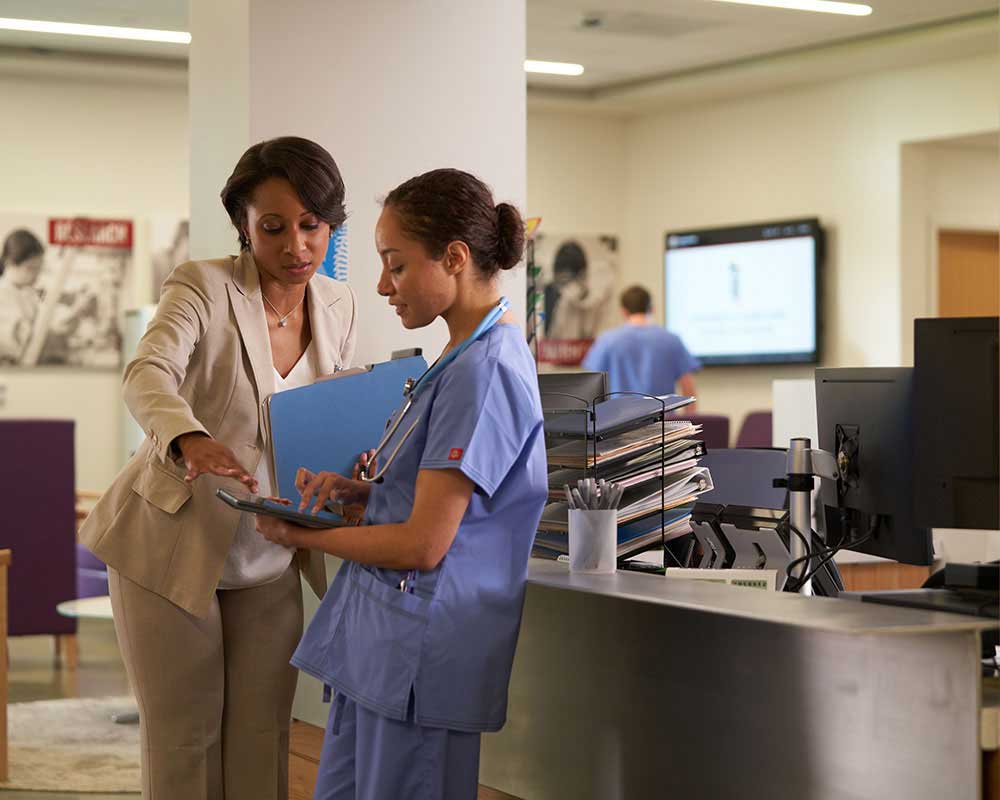Best Practices in Medical Management for Improving Performance and Lowering Prices
In the ever-evolving landscape of medical care, the pursuit of finest methods in clinical administration is critical for boosting performance and curbing expenses. By integrating advanced modern technologies such as digital health records and telemedicine, health care providers can improve operations and enhance individual care.
Leveraging Advanced Innovation
The assimilation of electronic services into health care systems has transformed the means facilities operate, streamlining procedures and improving patient treatment. By streamlining individual information, EHRs remove the requirement for cumbersome documentation and facilitate smooth communication amongst health care service providers.
Telemedicine is one more technical improvement that has changed individual interaction. It uses benefit for both people and health care professionals by allowing remote assessments, which can reduce the requirement for in-person brows through and enhance consultation scheduling. Furthermore, telehealth systems can prolong healthcare access to country or underserved areas, connecting voids in care shipment.
Additionally, the usage of Artificial Intelligence (AI) and maker learning is ending up being significantly prevalent in predictive analytics, enabling for very early detection of prospective health and wellness concerns and more educated decision-making. These technologies, when integrated successfully, can boost diagnostic accuracy and customize person therapy plans, ultimately leading to boosted health care results and functional performance.
Optimizing Resource Allotment
Reliable resource allowance is critical for maximizing the efficiency of medical administration. By purposefully handling sources such as workers, tools, and funds, medical care centers can dramatically boost their functional performance, improve client outcomes, and decrease unnecessary expenditures. The very first step in enhancing source allotment includes conducting an extensive assessment of current assets and recognizing areas where sources may be underutilized or overextended. This evaluation must be data-driven, utilizing metrics and analytics to notify decision-making processes.
Prioritizing resource allocation based upon individual requirements and solution needs is crucial. This includes aligning sources with high-demand locations, such as emergency situation care or specialized therapies, to make sure timely and efficient client treatment. Implementing adaptable staffing designs can additionally enhance labor sources by adjusting employees allocation in action to rising and fall person volumes. In addition, embracing telemedicine and various other technical services can relieve physical resource restrictions by providing alternate methods for patient-provider interactions.
Monetary sources should be meticulously checked and allocated with critical insight to sustain both temporary functional demands and long-lasting institutional objectives. This consists of investing in training programs that boost team competencies and adopting energy-efficient practices that lower functional prices (medical administration). Ultimately, an optimized resource allotment method promotes a lasting healthcare environment that is responsive, reliable, and monetarily sensible
Streamlining Process Procedures
When medical care centers purpose to boost functional performance, enhancing process processes ends up being an essential focus. Efficient workflows minimize redundancy, remove unneeded steps, and boost control amongst health care experts. This approach not just increases service delivery but also boosts the high quality of individual care.

Following, technology combination plays a substantial role in enhancing process. Executing digital wellness documents (EHRs) and computerized physician order entrance (CPOE) systems minimizes documentation, decreases human mistake, and guarantees info comes to all relevant workers. Furthermore, leveraging telemedicine systems can simplify patient consultations and follow-ups, minimizing the pressure on physical framework.

Ultimately, streamlined workflows lead to cost decreases and boosted person satisfaction, fostering a more lasting medical care environment.
Enhancing Data Administration
Building upon streamlined workflows, optimizing information management ends up being an important component beforehand healthcare management. Effective data management systems are important for maintaining accurate person records, improving decision-making, and guaranteeing conformity with regulative standards. By implementing robust information management solutions, health care centers can enhance the quality of person treatment while concurrently decreasing operational expenses.
One key facet of improving information management is the assimilation of advanced digital health and wellness document (EHR) systems. These systems help with the smooth exchange of individual information across different divisions, decreasing replication of tests and decreasing errors. A properly designed EHR system supports data analytics, making it possible for medical care providers to determine trends and make notified choices pertaining to client treatment.
Moreover, securing person data is critical. Taking on comprehensive cybersecurity actions, consisting of security and regular audits, makes certain the stability and confidentiality of delicate details. This not only shields clients yet also preserves the institution's track record.
Buying personnel training is an additional crucial element. Informing medical care specialists on data management techniques enhances their ability to efficiently use innovation, causing boosted person end results. To conclude, enhancing information administration through advanced technology and detailed training is essential for achieving efficiency and cost reduction in clinical management.
Fostering Collaborative Interaction
A critical component beforehand medical administration is cultivating joint interaction amongst advice medical care specialists. Efficient communication is critical for guaranteeing seamless patient treatment, maximizing treatment outcomes, and decreasing mistakes. By motivating open dialogue and coordination throughout multidisciplinary groups, healthcare organizations can enhance their functional performance and minimize unneeded costs.
Central to this strategy is the combination of communication innovations such as electronic health documents (EHRs) and secure messaging platforms, which promote the rapid exchange of vital individual details. These devices allow doctor to access and share information in genuine time, ensuring that all employee are notified and straightened in their decision-making processes. In addition, routine group meetings and interdisciplinary rounds can further promote a culture of collaboration and liability.
Training programs concentrated on boosting communication abilities are also necessary. These programs can help team develop the capability to share information plainly and listen proactively, therefore reducing misconceptions and cultivating a supportive job setting. Additionally, embracing standard interaction protocols, such as SBAR (Circumstance, Background, Evaluation, Recommendation), can enhance the exchange of details, ensuring that essential details are shared succinctly and effectively. Ultimately, promoting collaborative communication results in enhanced medical care shipment and cost savings (medical administration).

Conclusion
Incorporating sophisticated technology, such as electronic health records and telemedicine, alongside optimized resource allocation and structured operations procedures, is crucial for enhancing efficiency in medical management. Effective click now data management and cultivating joint interaction among healthcare teams are essential for minimizing redundancies and improving treatment high quality. By prioritizing preventive treatment and involving in quality improvement campaigns, healthcare organizations can achieve considerable expense savings and improved person results, therefore ensuring sustainable medical care delivery in a significantly complicated environment.